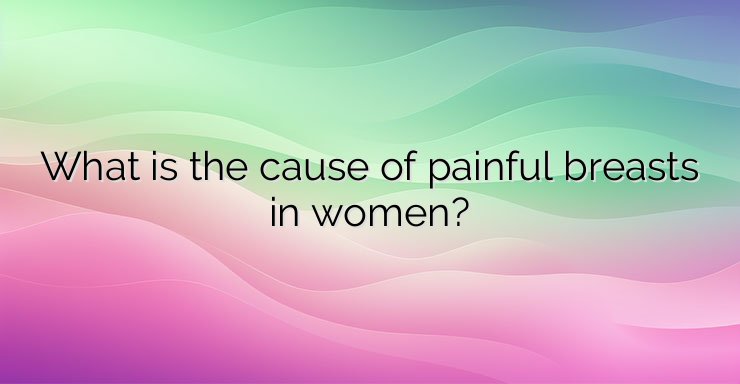Breast pain, also known as mastalgia, is common in women. Hormonal changes during the menstrual cycle and before menopause are the main cause of breast discomfort and pain. In addition to pain, the breasts may feel tight, swollen, and tender to the touch. If the discomfort is due to hormonal changes during the menstrual cycle, it usually appears in the days before menstruation and is felt in both breasts. Premenstrual pain is usually felt in the upper and outer part of the breast. Women with dense breasts are affected more often by this pain. The reason is that these breasts are made up of more fibrous tissue than fatty tissue and are more sensitive to hormonal changes. Because of this, they are more prone to inflammation and can even cause discomfort with minimal friction. Pain affects one breast Hormonal changes are not the only cause of breast pain. Other causes are: Mastitis – an infection that affects the ducts of the mammary gland. The pain is usually sharp and the affected breast is hot, swollen and red. They may also have a lump in the breast and develop a fever. Cyst – when fluid accumulates in one of the numerous lobes that make up the mammary gland. They are usually round and smooth to the touch and move when touched. Cysts are not always painful. Some of them change in size because the cysts sometimes get bigger during ovulation and decrease on the days of menstruation. Benign tumor – the most common is called fibroanedoma. Fibroadenomas are firm and, like cysts, move easily under the skin. Could the cause be outside the breast? Sometimes the origin of the pain is not in the breast, although it is felt in it. Contracture, stretching or inflammation of the cartilage that connects the ribs to the sternum – costochondritis can cause chest pain, especially associated with movement. Most often it appears only on one side. Certain medications, such as birth control pills, hormone therapy, certain antidepressants, antibiotics, and antihypertensives can also cause breast pain. Pain and breast cancer risk According to a large study published in the British Journal of General Practice, with data from more than 10,000 women, pain does not increase the risk of breast cancer. Among participants who reported breast pain, the rate of breast cancer was 0.4%. In contrast, among those who showed symptoms such as a lump or nipple changes, the incidence was much higher, approximately 5%. How to reduce chest pain? Choosing the right bra size. Consuming a maximum of 2 coffees per day – some women report less discomfort by reducing or eliminating caffeine. It appears that it may favor hormonal changes. Reducing salt consumption – in large quantities, salt favors the typical swelling during premenstrual syndrome.It is recommended that salt be taken in moderate quantities if the breasts tend to swell before menstruation. References: https://www.sabervivirtv.com/ginecologia/causas-dolor-senos_6925


Leave a Reply